Why Are Colombia's Manufacturers Replacing Manual Handling with Pallet Inverters?
Are you watching your team manually transfer heavy goods from one pallet to another? You probably see the strain on their backs and the slow, careful movements needed to avoid dropping anything. I’ve been in countless factories across the world, and I see the same story. This manual process is a hidden drain on your business, causing workplace injuries, product damage, and production bottlenecks that quietly eat away at your profits. Many Colombian manufacturers are now realizing this and are turning to a surprisingly simple solution: the pallet inverter. This machine isn't just a new gadget; it's a fundamental change in how they handle materials, making their operations safer, faster, and more profitable.
Colombian manufacturers are replacing manual handling with pallet inverters to achieve three core benefits: drastically improve worker safety by eliminating strenuous lifting, boost operational efficiency by automating a key bottleneck, and reduce costs associated with product damage and labor. This strategic shift allows them to compete more effectively in both domestic and international markets.
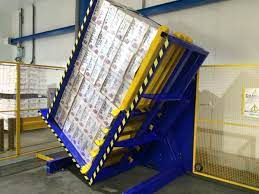
I’ve spent my career on the factory floor, first as an engineer and now as a factory owner myself. I understand the pressure to keep costs down while pushing productivity up. It’s a constant balancing act. You might look at a pallet inverter and see an expense. But what I want to show you is how to look at it as an investment with a clear and rapid return. We are going to break down the exact reasons why this technology is gaining so much traction in a dynamic market like Colombia. Let's dive into the practical, real-world impacts of this machine.
How Do Pallet Inverters Directly Impact Workplace Safety?
Have you ever had to tell an employee’s family that they were injured at work? It’s one of the worst parts of being a manager or owner. A significant number of these injuries come from repetitive, heavy lifting—exactly the kind of work involved in manually swapping pallets. You see the immediate costs in medical bills and worker's compensation, but the ripple effects of low morale and fear on the factory floor can be even more damaging. A pallet inverter offers a direct and effective solution by removing the human body from this dangerous equation.
Pallet inverters directly improve workplace safety by taking over the physically demanding task of transferring goods between pallets. This mechanical process eliminates the need for manual lifting, bending, and twisting under heavy loads, which drastically reduces the risk of musculoskeletal injuries for workers.
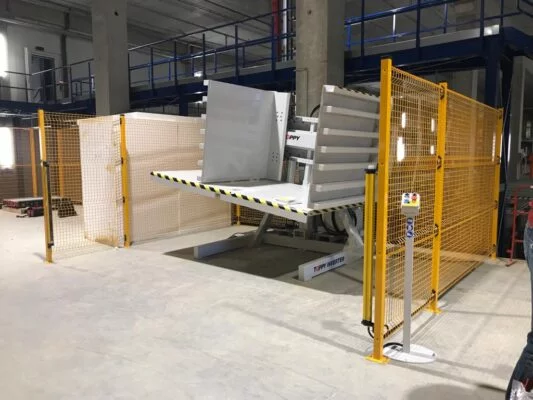
When I was starting out as a young engineer, I worked in a plant where a veteran operator, a man who had been with the company for 20 years, suffered a severe back injury while restacking a pallet of steel components. He never fully recovered and couldn't return to the job he loved. That event stuck with me. It’s not just about lost productivity; it’s about people's lives and well-being. This is why safety is always the first thing I discuss with clients. A safe operation is an efficient and profitable one. The beauty of a pallet inverter is that its primary function—transferring a load—directly translates into a safer environment. It’s not an add-on safety feature; its very existence is a safety feature.
The Hidden Costs of Manual Handling Injuries
We all see the direct costs of an injury, like medical treatment and insurance premium hikes. But the indirect costs are often much larger and harder to quantify. When an experienced worker is out, you lose their expertise. You have to spend time and money training a replacement, who will likely be slower and make more mistakes initially. Production schedules get disrupted. Team morale can drop, as other workers worry about their own safety. These factors create a drag on your entire operation. A single injury is not a single event; it's a wave that disrupts the entire flow of your factory.
| Cost Category | Description | Financial Impact |
|---|---|---|
| Direct Costs | Medical Bills, Compensation Payments, Insurance Increases | Immediately quantifiable and high. |
| Indirect Costs | Lost Production Time, Cost of Replacement Labor | Can be 2-3x the direct costs. |
| Administrative Costs | Time spent on incident reports, investigations | Diverts management focus from core tasks. |
| Morale Costs | Decreased employee morale and increased anxiety | Leads to lower productivity and higher turnover. |
Ergonomics by Design: A Mechanical Solution
A pallet inverter is a piece of ergonomic engineering. It is designed to perform a task in the most efficient and least stressful way possible. The machine securely clamps the entire load from the top and bottom. Then, it uses a hydraulic or electric system to rotate the load smoothly, often by 180 degrees. The operator simply uses controls to manage the process. There is no lifting, no bending, no twisting with a heavy weight. The machine bears the entire load. This removes the primary risk factors for musculoskeletal disorders (MSDs), which are the most common type of workplace injury. It's a simple, mechanical solution to a complex biological problem. It protects your most valuable asset: your people.
What Are the Economic Gains from Increased Operational Efficiency?
Every factory manager knows that time is money. A production line that sits idle is a line that is losing you money. One of the most common and overlooked bottlenecks is the manual transfer of goods between pallets. This process is slow, labor-intensive, and unpredictable. What if you could take a task that takes two workers 15-20 minutes and complete it with one worker in under 60 seconds? This is the kind of efficiency gain we're talking about with pallet inverters. It’s not a small improvement; it's a transformation of your workflow.
The main economic gain from a pallet inverter’s efficiency comes from a sharp drop in labor hours per task and a significant increase in throughput. By automating pallet exchange, factories can process more goods in less time and reassign workers to tasks that generate more value, directly boosting the bottom line.
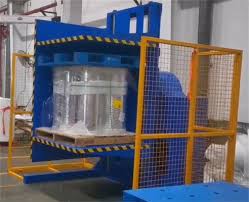
I remember visiting a client in the food and beverage industry. Their export business was growing, but they were struggling to keep up. Their team was working overtime just to manually switch finished goods from their internal wooden pallets to plastic export pallets. It was a huge bottleneck. We installed a simple, standalone pallet inverter. A month later, the manager called me. He told me they had completely eliminated overtime in the shipping department and were now able to process 30% more shipments per day. The machine paid for itself in less than six months. That’s the power of targeting and eliminating a single, critical bottleneck.
Calculating the ROI of a Pallet Inverter
For a practical business owner, the numbers have to make sense. Let's break down a simple Return on Investment (ROI) calculation. You need to look at what you save versus what you spend. The savings come primarily from labor. If you have two workers spending 4 hours a day swapping pallets, that’s 8 labor hours. If a pallet inverter allows one worker to do the same work in 1 hour, you save 7 hours of labor every single day. Multiply that by your hourly labor cost, and you'll see the savings add up quickly. Then, add the value of increased throughput—moving more products means more revenue.
The Ripple Effect on the Production Line
Fixing a bottleneck has effects that spread throughout your factory. When the pallet swapping process is fast and predictable, your shipping department can clear finished goods more quickly. This frees up valuable floor space in your warehouse. It also means the production line doesn't have to stop or slow down because the outbound area is full. This creates a smoother, more continuous flow from raw materials to finished product. This consistency allows for better planning, more accurate scheduling, and ultimately, a more stable and productive operation. Think of it like fixing a traffic jam on a highway; suddenly, all the cars can move at the speed they are supposed to.
| Metric | Before Pallet Inverter (Manual) | After Pallet Inverter (Automated) |
|---|---|---|
| Cycle Time / Pallet | 15-20 minutes | < 1 minute |
| Workers Required | 2 | 1 |
| Pallets / Hour | 3-4 | > 40 |
| Labor Cost / Pallet | High | Very Low |
| Production Halts | Frequent | Rare |
How Do Inverters Protect Products and Reduce Waste?
You work hard to manufacture a quality product. The last thing you want is for it to be damaged just before it gets to your customer. Yet, manual handling is a major source of product damage. A dropped box, a crushed corner, a load that shifts and falls—these incidents are costly. You lose the product itself, the labor and materials that went into it, and you may even damage your reputation with the client. It’s a completely unnecessary loss. A pallet inverter provides a secure, controlled way to handle entire loads, dramatically reducing the risk of this kind of waste.
Pallet inverters protect products by using a controlled clamping and rotation system. This method secures the entire load as a single block before transfer, preventing the shifting, dropping, and impact damage that frequently happens during manual restacking. This results in less waste and higher quality assurance.
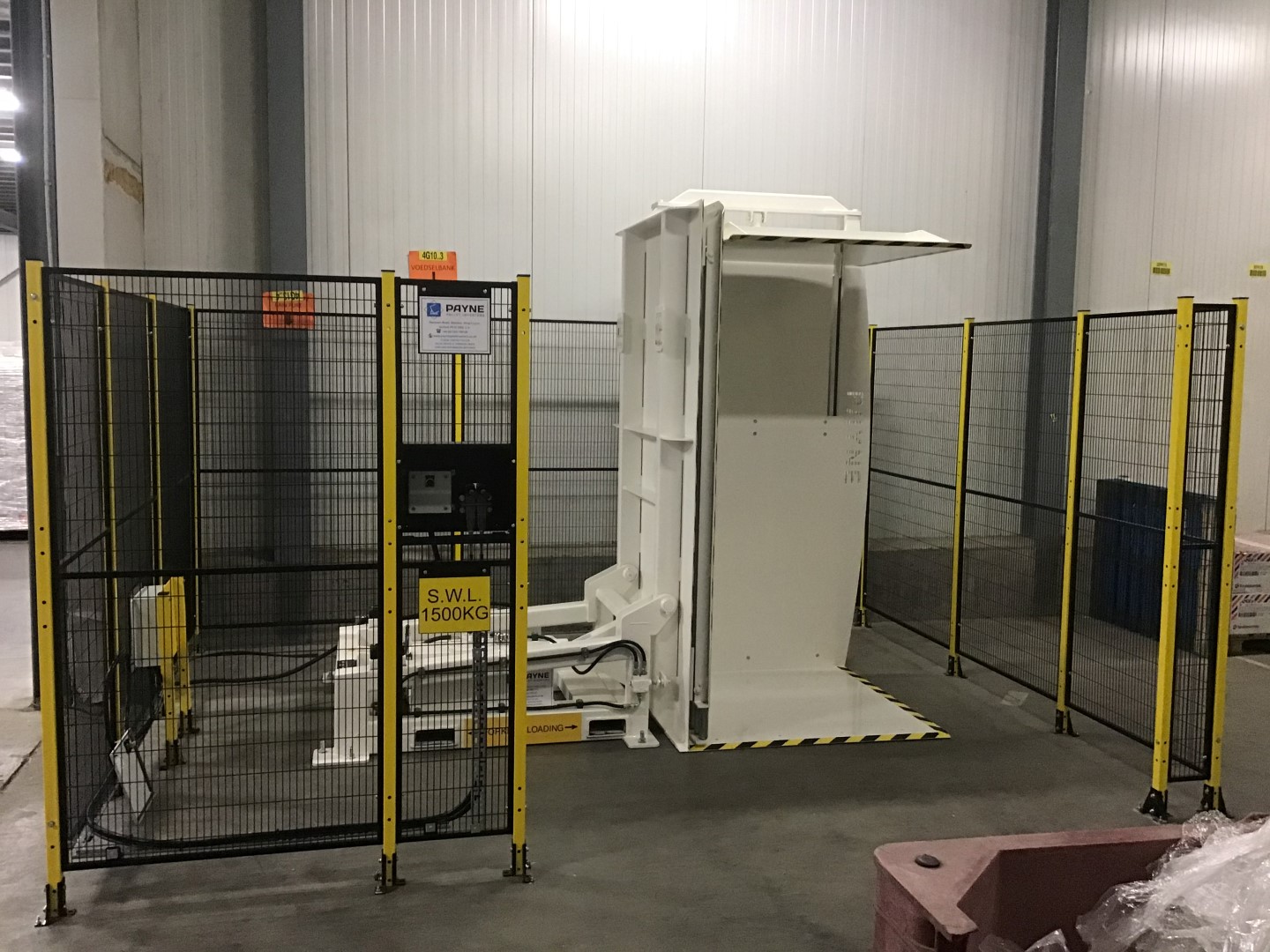
As an engineer, I appreciate good design. The design of a pallet inverter is focused on one thing: control. When your workers are moving boxes one by one, there are dozens of opportunities for something to go wrong. A moment of distraction, a tired muscle, a slippery surface. The inverter replaces that variability with mechanical precision. It holds the load with carefully calibrated pressure and moves it in a smooth, predictable arc. I once worked with a company that produced bags of cement. They were losing thousands of dollars a month from bags that were torn during manual transfer to shipping pallets. The investment in a pallet inverter stopped that loss almost overnight.
The Mechanics of Gentle Handling
Modern pallet inverters are sophisticated machines. They often feature adjustable clamping pressure. This is critical. You can set a lower pressure for delicate goods like boxes of fruit and a higher pressure for a solid load like steel parts. The rotation is slow and smooth, not jerky. This prevents the internal contents of the boxes from shifting and becoming damaged. The entire process is designed to treat your product with care, ensuring it arrives at its destination in the same condition it left your production line. It replaces human effort with something more reliable: gentle, consistent, mechanical force.
Quality Control and Hygiene Standards
Product protection isn't just about preventing breakage. It's also about maintaining quality and hygiene. This is especially important for Colombian companies exporting food, pharmaceuticals, or other sensitive goods. Many international regulations require products to be shipped on specific types of pallets, like heat-treated (ISPM 15) or plastic pallets. A pallet inverter makes it simple to switch from a standard in-house wooden pallet, which might be dirty or damaged, to a clean, compliant shipping pallet right before loading. This is a critical quality control step. It ensures you meet international standards and prevents entire shipments from being rejected at the border due to a non-compliant or broken pallet. It’s a small step in the process that protects a huge amount of value.
Why is a Pallet Inverter More Than a Machine, But a Strategic Tool?
Many factory owners I meet initially see equipment in simple terms. They have a problem, and they look for a machine to fix it. A pallet inverter certainly solves the problem of manual handling. But if you only see it that way, you are missing the bigger picture. When I talk with a client, I don’t just want to sell them a machine. My goal is to provide a total solution. I encourage them to see the pallet inverter not as a simple tool, but as a strategic asset that gives their business more flexibility and resilience. It’s a key that can unlock new levels of efficiency and even new markets.
A pallet inverter is a strategic tool because it provides critical operational flexibility. It enables a manufacturer to easily and quickly switch between different pallet types, adapting to internal logistics, customer requirements, or international shipping standards on the fly. This agility is a significant competitive advantage in a fast-moving global market.
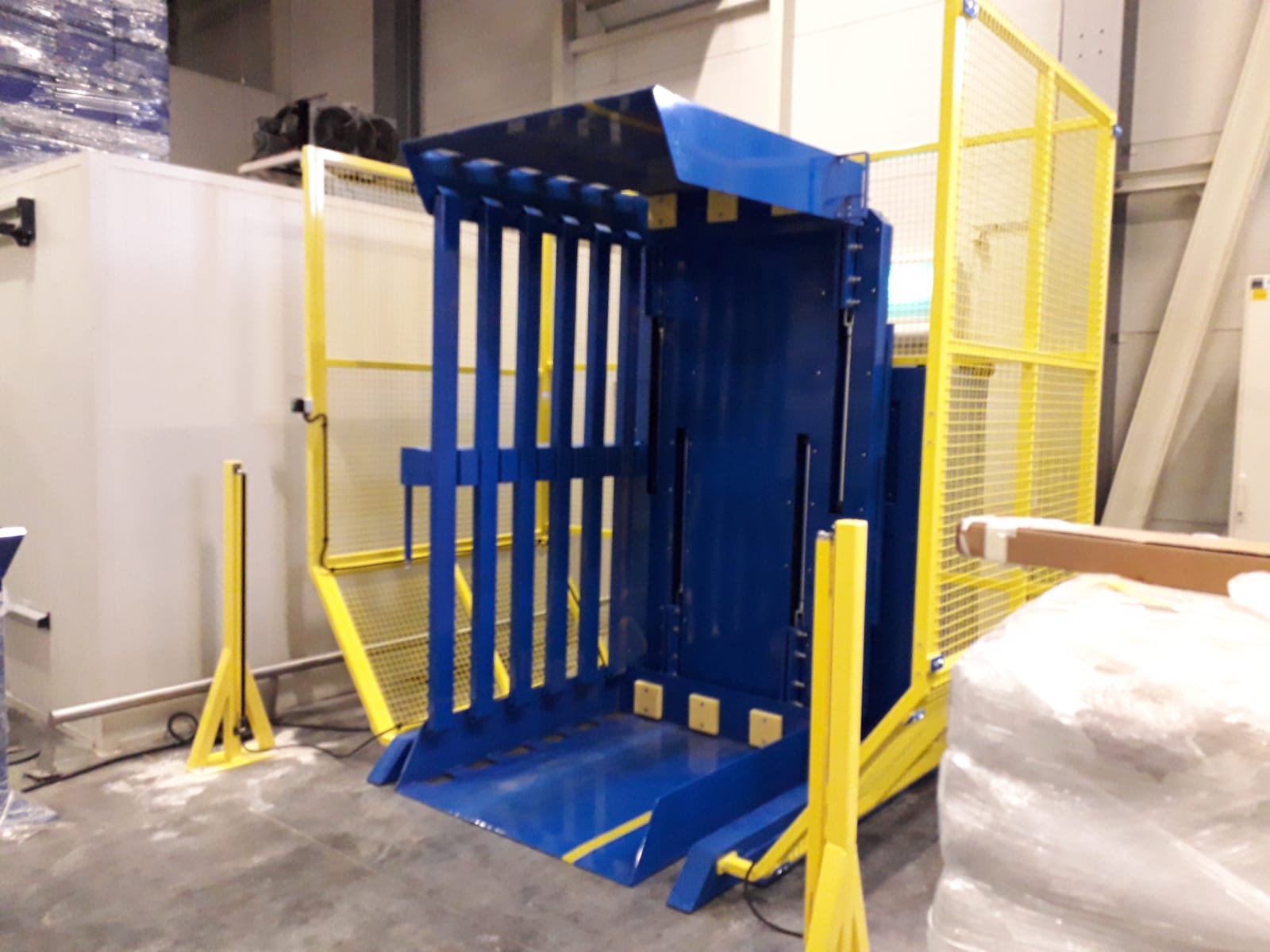
My journey from being an employee in a packing machine factory to owning my own has taught me one crucial lesson: the best companies think systematically. They don't just solve today's problems. They build systems that prepare them for tomorrow's challenges and opportunities. A pallet inverter is a perfect example of this. Yes, it solves your immediate safety and efficiency issues. But it also positions your company to be more adaptable. It becomes a central hub in your logistics flow, connecting your internal processes with the demands of the outside world. This is the kind of thinking that turns a good company into a great one.
Unlocking Supply Chain Flexibility
Think about all the different pallets that move through a modern supply chain. You might use cheap, durable captive pallets for internal movement within your plant. Your customers might require specific pallet sizes. For international shipping, you need ISPM-15 compliant wood pallets or plastic pallets. Some industries use rental pallet pools from companies like CHEP or LPR. A pallet inverter allows you to navigate this complex world with ease. You can transfer your finished goods onto the exact pallet needed for the next step of the journey, just in time. This ability to adapt quickly, without manual labor and bottlenecks, makes your entire supply chain more robust and responsive.
A Gateway to Automation and Digitalization
For many companies, a pallet inverter is a fantastic first step toward greater automation. It can be installed as a standalone unit, delivering immediate benefits. But it is also designed to be integrated into larger automated systems. You can connect it with conveyor belts, automatic guided vehicles (AGVs), and your Warehouse Management System (WMS). For a forward-thinking owner who wants to build a "smart factory," the pallet inverter is a natural building block. It can receive a load from an automated production line, swap the pallet, and then send it on to an automated storage and retrieval system (AS/RS). It becomes a key node in a fully connected, data-driven logistics process.
| Department | Challenge Solved by Pallet Inverter | Strategic Benefit |
|---|---|---|
| Operations | Slow manual pallet swapping bottleneck. | Increased throughput and smoother workflow. |
| Human Resources | High rate of lifting-related injuries. | Safer work environment, lower compensation costs. |
| Finance | High costs from labor and product damage. | Reduced operational costs, improved profit margin. |
| Quality/Compliance | Need to switch to export/hygienic pallets. | Easy compliance with international standards. |
Conclusion
Adopting pallet inverters is not just an equipment upgrade. It is a fundamental step toward smarter, safer, and more profitable manufacturing for Colombian companies in a competitive world.


